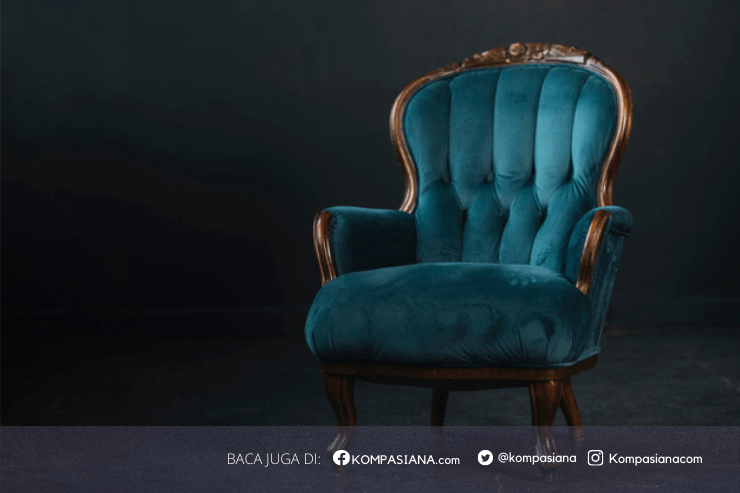The Martial Law Crisis in South Korea
The martial law declaration in South Korea in the early 1980s was a pivotal moment in the country's history, as it
marked a significant departure from its democratic aspirations and a return to authoritarian rule. South Korea had
long been a strategic focus of international powers, with its geographical position making it a center of contest
among China, Japan, and Russia (Padelford, 1951). The period of Japanese rule, which was harshly imposed, saw
Korean elements agitating for independence and self-rule (Padelford, 1951).
This context set the stage for the events that unfolded in South Korea in the 1980s. While the "freedom years"
characterized by elections, free speech, constitutional bill of rights, and civil liberties were brief (Laquian, 1975),
the South Korean government's decision to impose martial law was a response to the growing demands for
democracy and political reform.
The South Korean military played a key role in the country's political and social transformation, with the
government receiving significant material, economic, and technical aid from the Cold War superpowers (Lovell
et al., 1970). This support, however, came with the expectation that South Korea would align with the interests of
its benefactors, which often conflicted with the aspirations of the Korean people.
The declaration of martial law in South Korea was a complex and multifaceted issue, with the government seeking
to maintain its grip on power in the face of growing calls for democratization (Wintrobe, 2013). The country's
native bureaucratic and political culture, which has been characterized as emotive, familial, hierarchical, and
authoritarian, also played a role in shaping the government's response to the crisis (Im et al., 2013).
The South Korean government's decision to impose martial law was a controversial and divisive move, as it
represented a clear departure from the democratic principles that many Koreans had fought for. The consequences
of this decision continue to reverberate in South Korean politics and society today.
The imposition of martial law in South Korea was met with widespread resistance and civil unrest. The South
Korean government's response to these protests was often heavy-handed and authoritarian, with security forces
cracking down on dissent and restricting civil liberties (Wintrobe, 2013).
The crisis in South Korea was further exacerbated by the country's high levels of "education fever," which had
contributed to the development of a more politically active and engaged citizenry (Seth, 2012). The government's
efforts to use the education system to promote loyalty and legitimacy to the state were met with resistance from a
population that was increasingly demanding greater political freedoms and representation.
Ultimately, the martial law crisis in South Korea was a complex and multifaceted issue, with the government's
actions reflecting a broader struggle for power and control in the face of growing demands for democracy and
reform. The imposition of martial law also highlighted the tension between the government's desire for stability
and control and the people's aspirations for greater political rights and freedoms.
The South Korean government's decision to impose martial law was met with widespread condemnation both
domestically and internationally. The international community, including the United States, pressed the South
Korean government to lift the martial law and restore democratic rule (Larsen, 1961).
Despite the government's efforts to maintain its grip on power, the people of South Korea continued to resist and
agitate for greater political freedoms. The crisis ultimately led to the fall of the authoritarian regime and the
establishment of a more democratic system of government, though the process was not without its challenges and
setbacks.
The Kwangju Uprising, which took place in May 1980, was a significant event during the martial law crisis. This
citizens' revolt against the government's brutal crackdown on dissent was a powerful symbol of the people's
resistance to authoritarian rule and their desire for democratic reform ("Introduction," 2017).
The martial law crisis in South Korea was a complex and multifaceted issue, reflecting the country's tumultuous
history and the ongoing struggle for political power and control. While the government's actions were aimed at
maintaining stability and control, they ultimately failed to quell the growing demands for democracy and reform,
leading to a fundamental shift in the country's political landscape.
The imposition of martial law in South Korea also had significant implications for the country's international
relations. The crisis and the government's response to it drew international attention and criticism, with the United
States and other allies pressing for a return to democratic rule (Larsen, 1961).
Ultimately, the martial law crisis in South Korea was a pivotal moment in the country's history, marking a significant departure from its democratic aspirations and a return to authoritarian rule. However, the resilience and determination of the Korean people, coupled with the pressure from the international community, ultimately led to the downfall of the authoritarian regime and the establishment of a more democratic system of government.
The South Korean government's decision to impose martial law in the 1980s was a controversial and divisive move that had far-reaching consequences for the country's political and social landscape. The crisis highlighted the tension between the government's desire for stability and control and the people's aspirations for greater political freedoms and representation.
While the government sought to maintain its grip on power, the people of South Korea continued to resist and agitate for democratic reform. The Kwangju Uprising, in particular, was a powerful symbol of the people's resistance to authoritarian rule and their desire for democratic change. ("Introduction," 2017)
The international community, including the United States, also played a significant role in shaping the outcome of the crisis, pressing the South Korean government to lift the martial law and restore democratic rule. (Larsen, 1961)
References
Im, T., Campbell, J. W., & Cha, S. (2013). REVISITING CONFUCIAN BUREAUCRACY: ROOTS OF THE KOREAN GOVERNMENT'S CULTURE AND COMPETITIVENESS. In T. Im, J. W. Campbell, & S. Cha, Public Administration and Development (Vol. 33, Issue 4, p. 286). Wiley. https://doi.org/10.1002/pad.1656
Introduction. (2017). In University of Hawaii Press eBooks. University of Hawaii Press. https://doi.org/10.1515/9780824863302-003
Laquian, A. A. (1975). Martial Law in the Philippines to Date. In A. A. Laquian, Philippine Political Science Journal (Vol. 2, Issue 2, p. 17). Taylor & Francis. https://doi.org/10.1080/01154451.1975.9753908
Larsen, W. F. (1961). Government Administration in the Republic of Korea. In W. F. Larsen, International Review of Administrative Sciences (Vol. 27, Issue 3, p. 311). SAGE Publishing. https://doi.org/10.1177/002085236102700308
Lovell, J., Sok, M. H., & Lee, Y. H. (1970). Recruitment Patterns in the Republic of Korea Military Establishment. In J. Lovell, M. H. Sok, & Y. H. Lee, Journal of Comparative Administration (Vol. 1, Issue 4, p. 428). SAGE Publishing. https://doi.org/10.1177/009539977000100403
Padelford, N. J. (1951). The United Nations and Korea: A Political Rsum. In N. J. Padelford, International Organization (Vol. 5, Issue 4, p. 685). University of Cambridge. https://doi.org/10.1017/s0020818300015745
Seth, M. J. (2012). Education zeal, state control and citizenship in South Korea. In M. J. Seth, Citizenship Studies (Vol. 16, Issue 1, p. 13). Taylor & Francis. https://doi.org/10.1080/13621025.2012.651400
Wintrobe, R. (2013). North Korea as a Military Dictatorship. In R. Wintrobe, Peace Economics Peace Science and Public Policy (Vol. 19, Issue 3). De Gruyter. https://doi.org/10.1515/peps-2013-0036
Follow Instagram @kompasianacom juga Tiktok @kompasiana biar nggak ketinggalan event seru komunitas dan tips dapat cuan dari Kompasiana
Baca juga cerita inspiratif langsung dari smartphone kamu dengan bergabung di WhatsApp Channel Kompasiana di SINI







